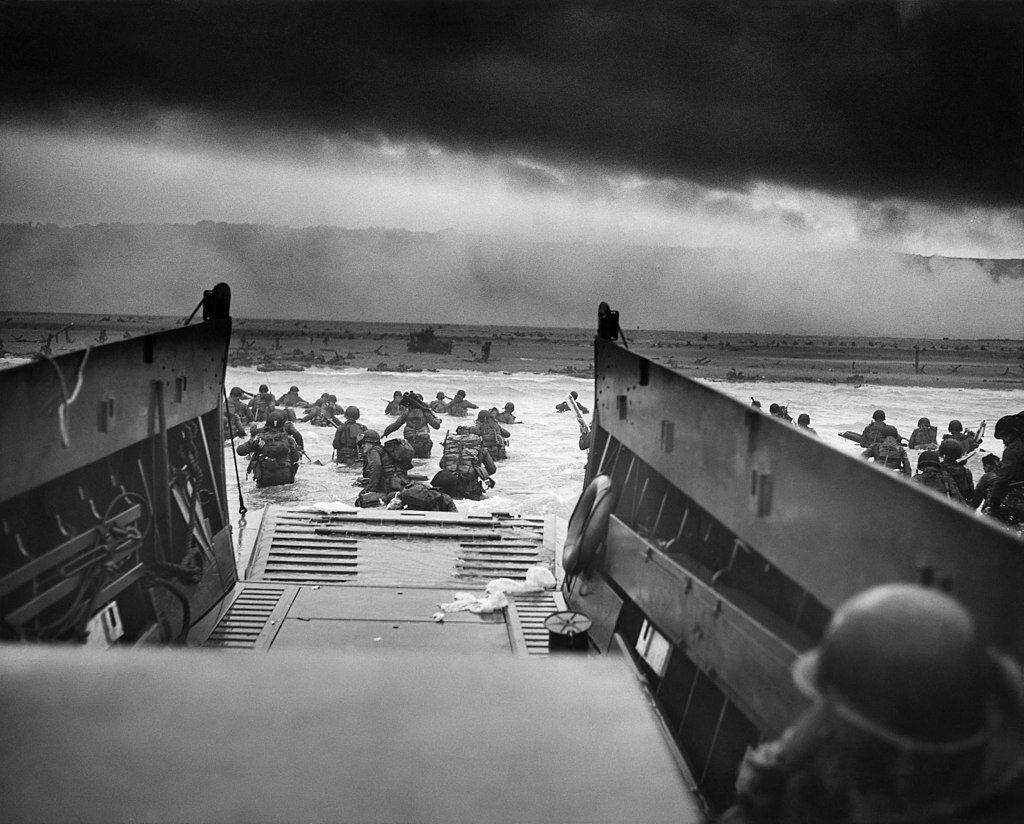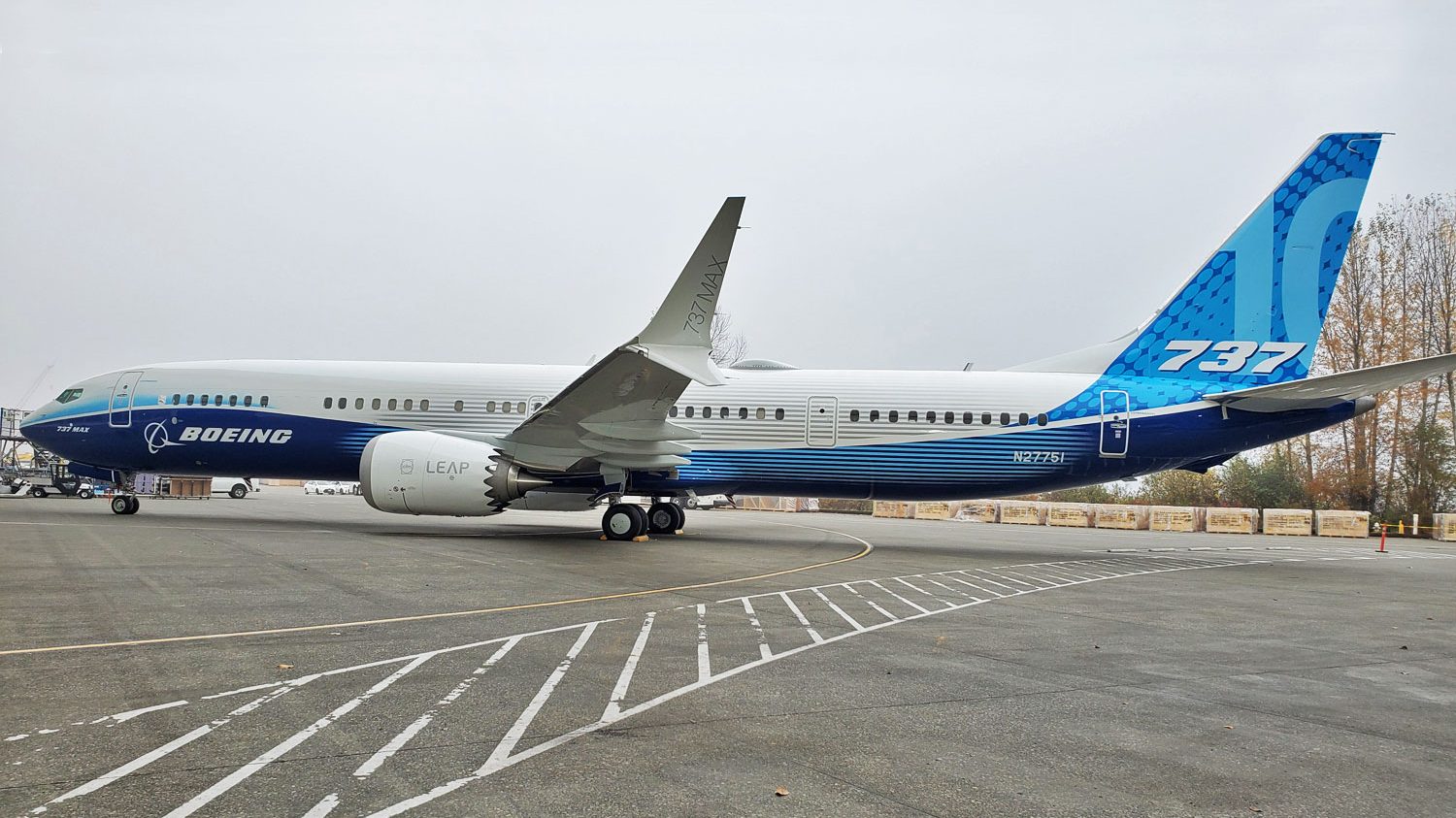Boeing EC-135 Variants:
April 11th, 2023
The Boeing EC-135 was one of the many variants of the Boeing 367-80 in the world, as well as the first successful jetliner. The 367-80 was built as a prototype for the 707 as well as all of the EC/RC-135 aircraft. This post is about the EC-135 variants - the RC-135 variants as well as the other 367-80 variants will be included on two other posts. The major thing that is confusing about these aircraft and others such as the EC-135 and 367-80 aircraft is that it was designed as as an aircraft that could do hundreds of missions, from hauling passengers and cargo to reconnaissance. Here is a list of all of the EC-135 variants:
- EC-135A (airborne launch control center)
- EC-18B/EC-135B (C-135B modified with large nose for ARIA mission)
- EC-135C "Looking Glass"
- EC-135E (re engined EC-135B "ARIA")
- EC-135G (upgraded EC-135A)
- EC-135H (airborne national command post role, "Silk Purse")
- EC-135J (airborne national command post role, "Nightwatch", replaced by E-4)
- EC-135K (deployment control duties, "Head Dancer")
- EC-135L (radio relay and amplitude modulation dropout capability "Cover All")
- EC-135N (newest ARIA aircraft)
EC-135A (airborne launch control center):
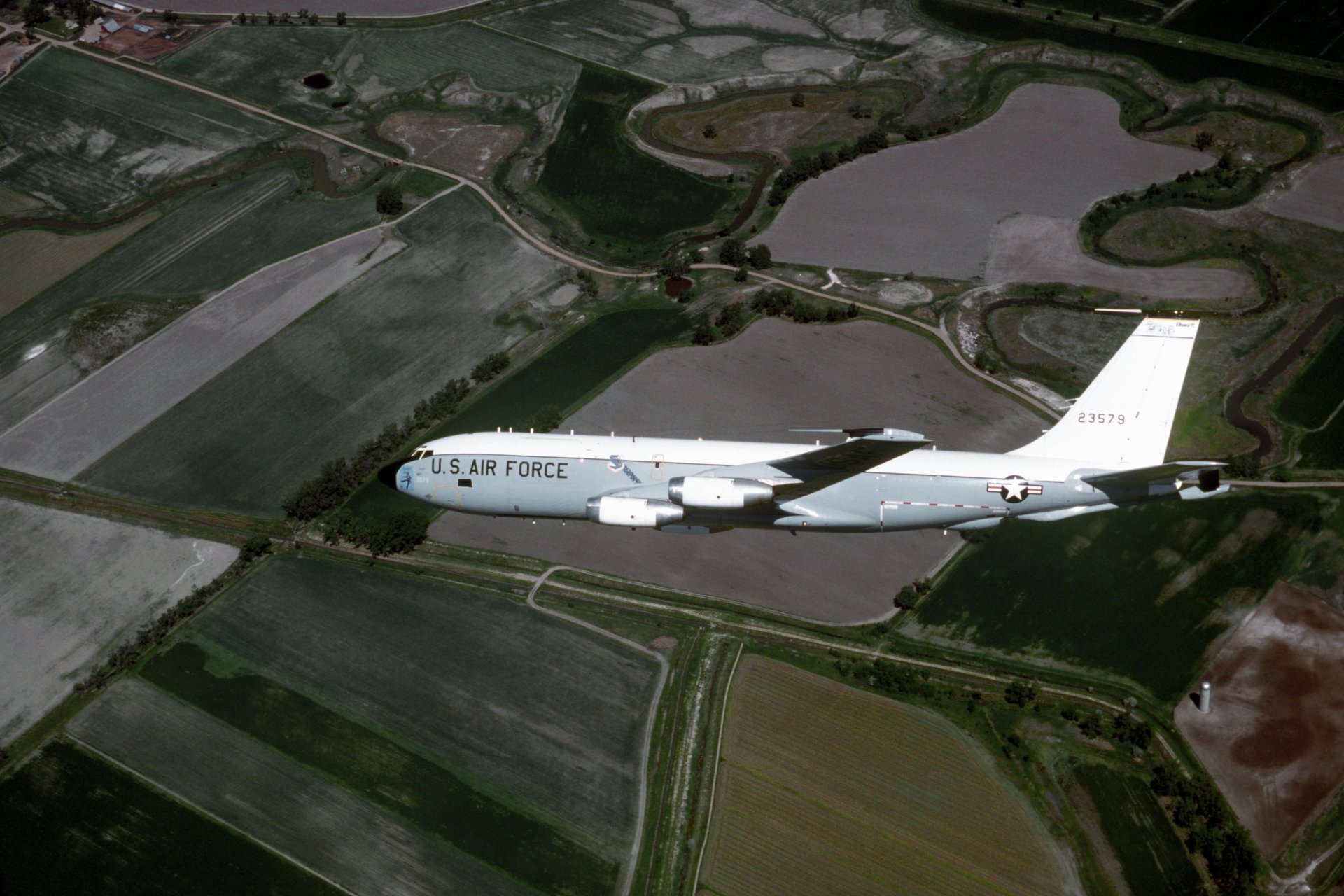
The EC-135A was the first EC-135 variant to be built. The -A was used as an airborne launch control center during the Cold War, so that the Commander in Chief of SAC (Strategic Air Command) could easily control launching of the missiles under USAF command in the event of a nuclear war. The type was retired by the end of the Cold War.
EC-18B/EC-135B "ARIA":
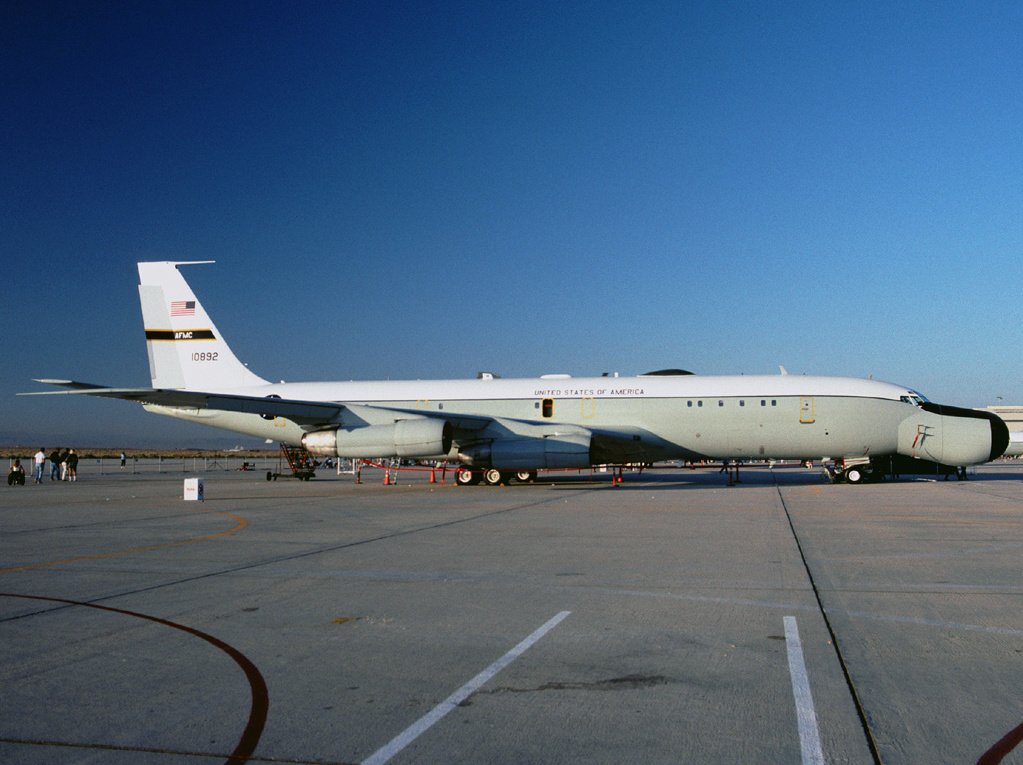
The EC-18B/EC-135B was the second variant of the EC-135 series. This aircraft was also the first aircraft modified for the ARIA program (Advanced Range Instrument Aircraft). The easiest way to identify an ARIA program EC-135 is by its distinctive, extra large nose. The reason for that is because it is used to house a large antenna in the nose for tracking spacecraft for NASA as well as to monitor USAF missile tests. The type was was retired on August 21st, 2001.
EC-135C "Looking Glass":

The EC-135C "Looking Glass" was an Airborne Command and Control. During the Cold War, these aircraft that was flown 24/7 just in case the Soviets attacked. If the Soviets did attack, then senior Air Force commanders onboard would be able to control USAF missiles from launch order to detonation. The type was retired in 2000 after being replaced by US Navy E-6s and US Air Force E-4B Nightwatchs.
EC-135E "ARIA":
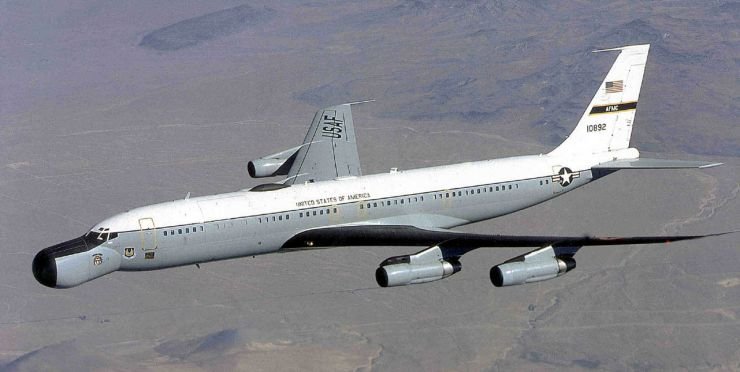
The EC-135E basically is the same aircraft as the EC-18B/EC-135B, with the same mission, but it was a slightly newer and re-engined EC-18B/EC-135B.
EC-135G (airborne launch control center):
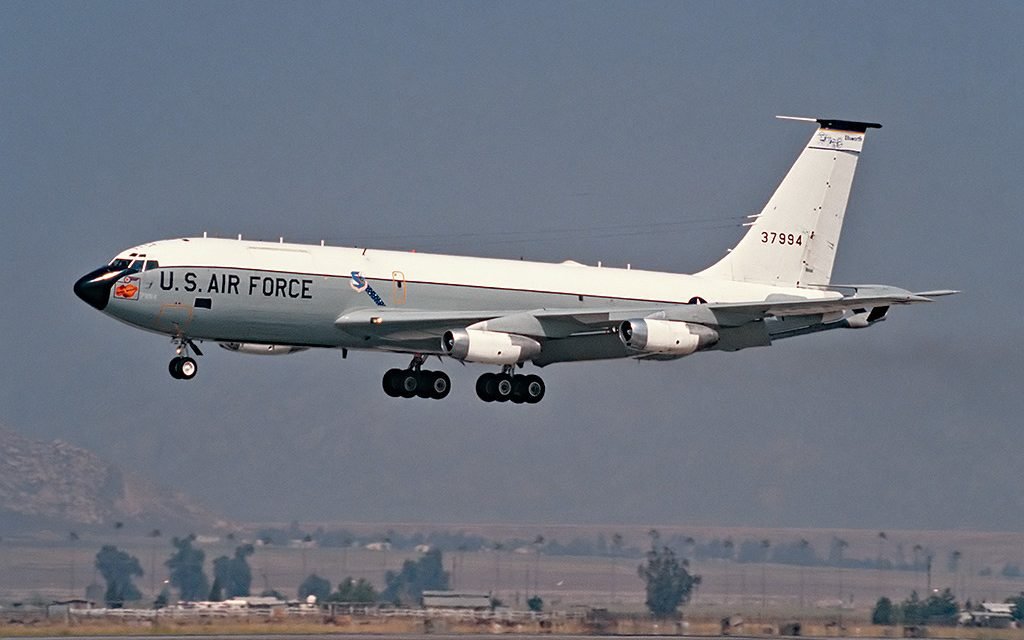
The EC-135G was the fifth aircraft in the EC-135 series. The aircraft was used as an replacement for the EC-135A with slight upgrades. This type was retired after SAC (Strategic Air Command) was disbanded in 1992.
EC-135H "Silk Purse":
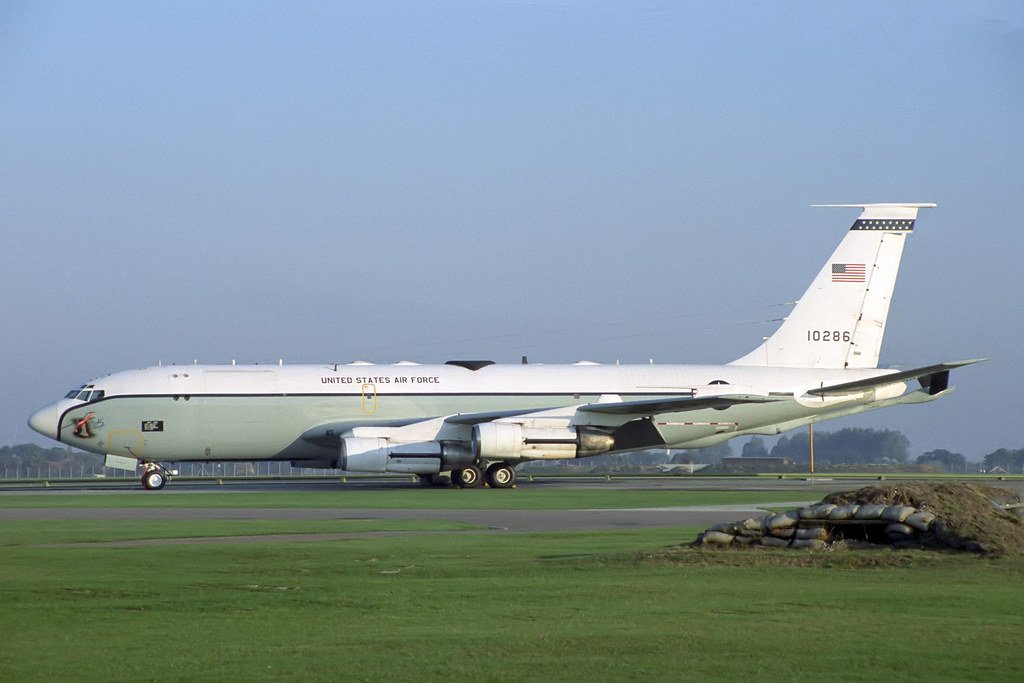
The EC-135H Silk Purse was a KC-135 Stratotanker (see refueling boom on the rear fuselage). The aircraft had basically the same mission as the EC-135A but was used by the US Commander-in-Chief of European Operations.
EC-135J (airborne national command post role, "Nightwatch"):
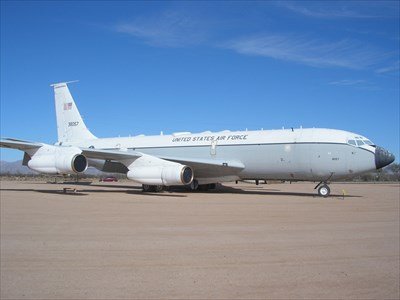
The EC-135J Nightwatch was used as an airborne national command post as an extreme backup Air Force One, and as the primary aircraft that the Secretary of Defense uses when traveling overseas. This type was known to hold the proper code books to give the command of the launching U.S. and NATOs missiles in the Cold War. This type was replaced in the 1980s by the E-4 Nightwatch.
EC-135K (deployment control duties, "Head Dancer"):
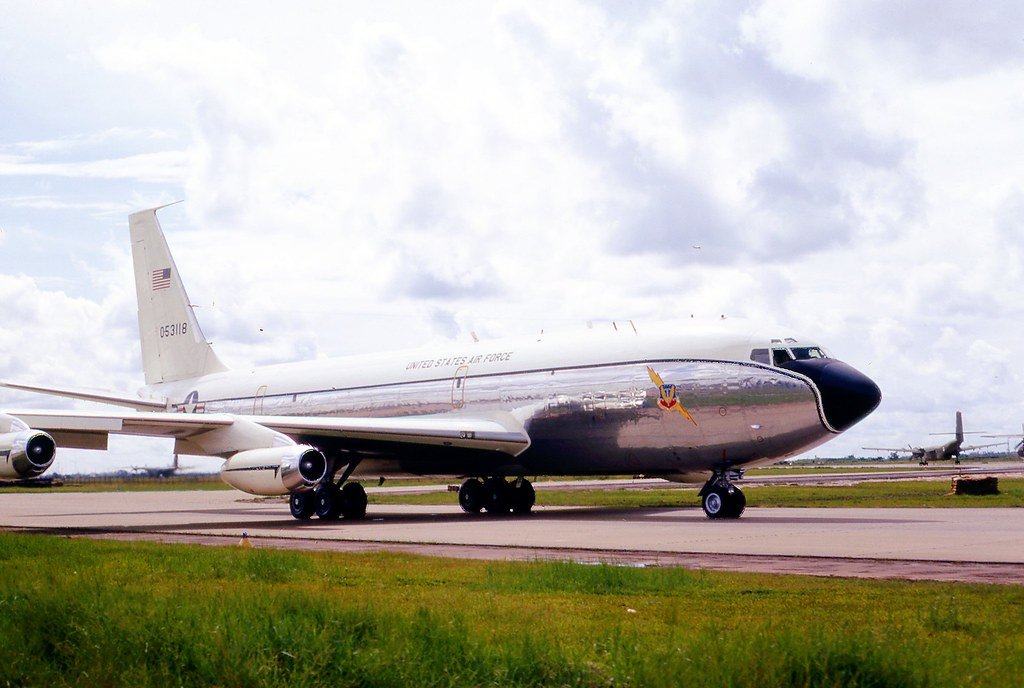
The EC-135K Head Dancer airframe was actually the first KC-135 to be built (it was named by Boeing "The Spirit of Renton") and was remodified as the EC-135K in 1970 with the Airborne Command Post which unfortunately crashed into the side of a mountain in 1977 killing all 20 occupants.
EC-135L (airborne national command post role "Cover All"):

The EC-135L Cover All was a airborne command post that was originally built as a KC-135A (you can actually see the only evidence of that with the air refueling boom on the rear fuselage).
EC-135N (newest ARIA aircraft):

The EC-135N ARIA was used jointly by both the USAF and NASA to track the Apollo program and was also the last aircraft in the ARIA series, as well as being the last aircraft in the EC-135 series. This airframe also served the same mission as the previous ARIA aircraft in this post.

